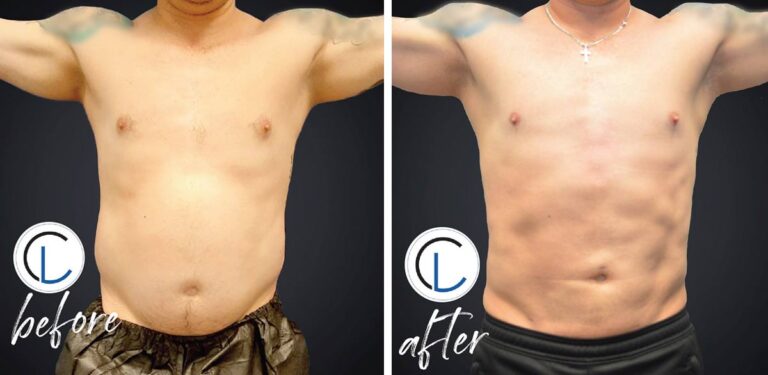Sculpting Femininity: The Journey to Comfort and Confidence with Labia Majora Reduction
Posted on: January 29, 2024
Labia majora reduction is a procedure gaining attention for its role in alleviating discomfort and enhancing personal aesthetics. This surgical intervention, while sensitive in nature, offers a solution for those experiencing physical or psychological distress due to enlarged labial tissue. With precision and care, medical professionals can tailor the procedure to meet individual needs, ensuring outcomes that align with patient expectations and well-being.
Understanding Labia Majoraplasty Surgery
Surgical Definition
Labia majoraplasty is a surgical procedure. It reshapes the labia majora, which are the outer folds of skin surrounding the vulva. Women choose this surgery for various reasons. Some seek comfort, others aesthetic improvement.
The process involves cutting away excess skin and tissue. This creates a more defined labial appearance. Surgeons aim for symmetry and natural contours during the operation.
Anatomical Changes
The surgery results in several anatomical changes to the labia majora. Excess skin removal leads to reduced size and bulkiness. The goal is a smoother, more proportionate genital area.
These alterations can enhance personal comfort with clothing and physical activities. They may also boost self-confidence due to improved aesthetics.
Procedure Duration
A typical labia majoraplasty takes one to two hours to complete. However, duration varies depending on individual cases and surgical techniques used.
Recovery times differ but most patients resume normal activities within six weeks post-surgery. Patients should follow their surgeon’s aftercare instructions closely for optimal healing.
Reasons for Choosing Labia Majora Reduction
Physical Comfort
Reducing the labia majora can relieve discomfort. Women often experience pain during activities like cycling or running. This surgery offers a solution. It targets unwanted friction and irritation.
The procedure may also help with hygiene issues. Excess skin can trap moisture, leading to infections. A reduction prevents these problems.
Self-Confidence
A more comfortable body leads to higher self-confidence. Women choose this surgery to feel better in tight clothing or swimwear. It’s not just about looks; it’s about feeling at ease.
Body image plays a huge role in mental health. Correcting perceived flaws can improve overall well-being.
Symmetry Correction
Asymmetry is common but bothersome for some women. The goal of labia majora reduction is symmetry restoration.
Aging changes our bodies, including the genital area. This surgery corrects such changes, maintaining a youthful appearance.
Preoperative Preparation for Labia Majoraplasty
Medical Evaluations
Before undergoing a labia majora reduction, it’s crucial to have thorough medical evaluations. These assessments ensure your readiness for the surgery and help avoid complications.
A plastic surgeon will review your medical history. They check for issues that might affect the procedure. Blood tests are often required. Sometimes, additional exams like an EKG or chest X-ray are needed if you have certain conditions.
Anesthesia Considerations for Labia Majoraplasty
Anesthesia Types
Labia majora reduction can use local or general anesthesia. The choice depends on the patient’s comfort and the procedure’s extent.
With local anesthesia, patients stay awake. They feel no pain in the treated area. General anesthesia puts patients to sleep. It is used for more complex surgeries.
Allergy Risks
Allergies to anesthesia are rare but serious. Patients must share their medical history with surgeons before labia majoraplasty.
Disclosing allergies helps prevent reactions during surgery. This includes any past issues with anesthetics.
Medical History
A detailed medical history is crucial for safe anesthesia use during labia majoraplasty. Patients should inform their surgeon about:
- Previous surgeries and anesthesia types used.
- Any adverse reactions experienced post-surgery.
- Current medications that might affect anesthetic effectiveness.
This information guides doctors in choosing the safest option for each individual.
Surgical Techniques for Labia Majora Reduction
Excisional Methods
Labia majora reduction can be achieved through excisional techniques. This involves the careful removal of excess tissue to create a more aesthetically pleasing contour. The surgeon carefully marks the area before excising unwanted skin and fat.
In contrast, liposculpture is less invasive. It reshapes the labia majora by removing fat through suction. This method may not require large incisions, leading to faster recovery times.
Suture Selection
Post-surgery, sutures are vital for healing. Dissolvable stitches are often used in labia majora reduction procedures. They naturally break down as the tissue heals.
Some surgeries might use non-dissolvable sutures instead. These require a follow-up visit for removal but can provide stronger support during healing.
Laser Technology
Modern advancements have introduced lasers into labial surgery. Lasers offer precision in cutting and coagulation, which can minimize bleeding and reduce scarring.
Radiofrequency and other energy devices also play a role in tightening tissues without extensive cutting. They represent an alternative way to achieve desired results with potentially less downtime.
Recovery Process Post Labia Majoraplasty
Healing Timeline
After a labia majora reduction, the healing process is crucial. Patients typically resume normal activities within a week. However, full recovery may take up to six weeks. During this time, it’s important to follow your doctor’s advice closely.
Swelling and discomfort should lessen after a few days. By the fourth week, most swelling subsides. Always consult with your surgeon before returning to any strenuous activity or exercise.
Surgical Care
Post-operative care is vital for proper healing. Keep the surgical site clean and dry to prevent infection. Your surgeon will provide specific instructions on how to wash and what ointments or creams to apply.
Wear loose clothing and soft underwear that doesn’t rub against the incisions. This helps minimize irritation during recovery.
Complication Signs
Be vigilant for signs of complications such as excessive swelling, redness, or discharge from the surgical area. Fever could also indicate an infection.
If you notice any unusual symptoms or if pain increases rather than decreases over time, contact your healthcare provider immediately.
Results and Benefits of Labia Majora Reduction
Typical Outcomes
After a labia majora reduction, patients can expect noticeable changes. The procedure typically results in a more proportionate appearance, which aligns with the individual’s body image. Swelling and discomfort diminish over weeks following surgery, revealing the final shape.
Patients report increased comfort during physical activities. Chafing or irritation caused by excess skin is often resolved. Clothing fits better without the previous bulges or outlines that may have been visible before surgery.
Psychological Impact
The psychological benefits are significant for many women post-procedure. A boost in self-esteem is common as concerns about appearance and discomfort are alleviated. Women express feeling more confident in intimate situations after healing.
This newfound confidence can extend to other areas of life, such as social interactions and personal relationships. The positive emotional effects contribute greatly to overall satisfaction with the procedure.
Longevity of Results
Results from labia majora reduction are generally permanent. Unlike some cosmetic procedures that require maintenance, this one does not typically need follow-up treatments once fully healed.
The permanence of results provides lasting relief from any pre-surgery issues related to oversized labia majora. It’s important for patients to maintain realistic expectations; natural aging processes will continue but should not significantly alter surgical outcomes.
Cost and Risks of Labia Majora Reduction
Price Range
The cost for labia majora reduction varies. It can range from $3,000 to $8,000. Several factors affect this price. These include the surgeon’s experience, geographic location, and facility fees. Sometimes anesthesia costs are separate.

Patients should ask about all costs upfront. This helps avoid unexpected expenses later on.
Influencing Factors
Many elements influence the final bill for labia majora reduction surgery. The complexity of the procedure is a key factor. More complex cases require more time and skill.
Another aspect is aftercare needs which may add to the total cost if special treatments or follow-up visits are needed.
Surgical Risks
Like any surgery, there are risks involved with labia majora reduction.
- Infection
- Scarring
- Changes in sensation
These side effects can vary in severity but usually resolve over time or with medical care.
A second paragraph isn’t necessary here as we’ve listed out the common surgical risks succinctly above.
Insurance Coverage
Most insurers view labia majora reduction as cosmetic surgery. Thus, they do not cover it typically. However, exceptions exist when it’s deemed medically necessary.
Patients should check with their insurance provider beforehand. This will clarify coverage details and help plan financially for potential out-of-pocket expenses.
Financial planning is crucial due to limited insurance support. Savings plans or healthcare financing options could be considered by patients needing assistance covering costs.
Closing Thoughts
Labia majoraplasty, a deeply personal choice, offers physical and psychological relief for those troubled by the size of their labia majora. This article has traversed the intricacies of the surgery, from motives and preparatory steps to surgical methods and recovery insights. The procedure’s potential to enhance comfort and self-esteem underlines its value despite inherent costs and risks. Expertise in surgical techniques is paramount, ensuring safety and optimizing results for each individual.
Considering the intimate nature of labia majora reduction, selecting a qualified surgeon is crucial. Prospective patients should engage in thorough research and discussions with healthcare professionals to understand fully the implications of this transformative journey. For more information or to schedule a consultation, reach out to certified specialists who can provide tailored advice and support through every step of this life-changing decision.
Frequently Asked Questions
What is Labia Majoraplasty Surgery?
Labia majoraplasty is a surgical procedure aimed at reducing the size of the labia majora to address physical discomfort or aesthetic concerns.
Why do individuals opt for Labia Majora Reduction?
Individuals may choose labia majora reduction for relief from irritation, enhanced comfort in clothing, or personal aesthetic preferences.
How should one prepare preoperatively for Labia Majoraplasty?
Preoperative preparation includes consultations with your surgeon, following specific dietary and medication guidelines, and arranging for post-surgery care and recovery time.
What anesthesia is used during Labia Majoraplasty?
The surgery typically involves local anesthesia with sedation or general anesthesia, as determined by the patient’s needs and surgeon’s assessment.
Are there different techniques for Labia Majora Reduction?
Yes, there are various surgical techniques which will be selected based on individual anatomy and desired outcomes.
What does the recovery process entail after undergoing Labiaplasty?
Recovery generally involves rest, limited physical activity, adherence to hygiene protocols, and follow-up appointments with your surgeon.
What results can one expect from a Labia Majora Reduction procedure?
Expected results include reduced size of the labia majora leading to improved comfort and confidence. Final results vary per individual.
How much does a Labia Majora Reduction cost and what are its risks?
Cost varies widely based on location and specific case details; risks include bleeding, infection, scarring. Always discuss these aspects thoroughly with your healthcare provider.





